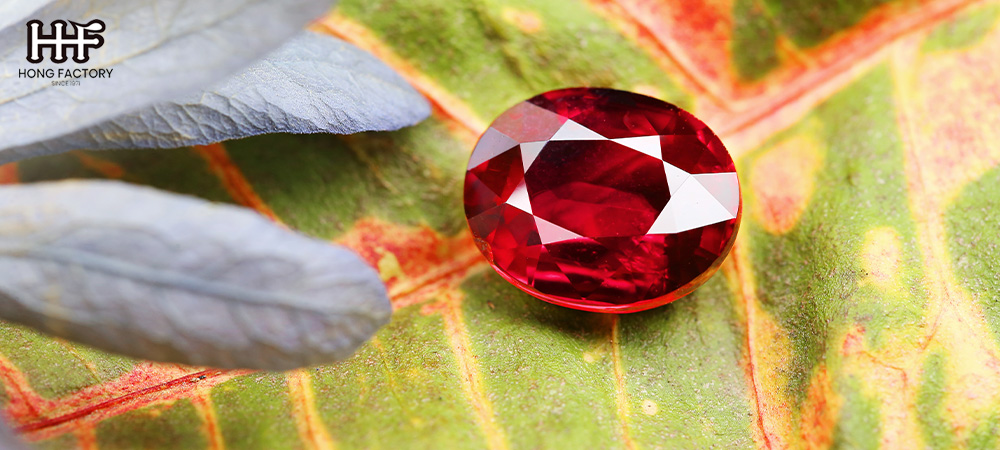The world of high-end investments is evolving, and rare jewelry is rapidly becoming the crown jewel of alternative asset classes. For centuries, these exquisite treasures have symbolized wealth, status, and unmatched craftsmanship.
Today, rare jewelry also represents an exceptional investment opportunity, with value growth fueled by scarcity, historical significance, and rising global demand. In this in-depth analysis, we examine the market forces driving the skyrocketing potential of rare jewelry, provide insights into market predictions, and offer tips to strategically time investments for maximum returns.
The Allure of Rare Jewelry
Rare jewelry is much more than a financial asset—it’s a combination of art, history, and culture encapsulated in a wearable form. Its appeal transcends monetary value, offering both aesthetic pleasure and emotional significance to its owners.
Emotional and Cultural Significance
Jewelry serves as a storybook of human history, with each piece often reflecting the culture and period in which it was created. Whether it’s an antique diamond necklace from the Victorian era, a 1920s Cartier bracelet reflecting the Art Deco movement, or a bespoke piece by contemporary designers, rare jewelry carries a narrative that resonates with collectors. These emotional connections, combined with the cultural weight of certain iconic designs, add to the allure of owning and investing in rare jewelry.
Timeless Value and Versatility
Unlike stocks or bonds, rare jewelry holds a tangible value that is impervious to the volatility of financial markets. Diamonds, emeralds, rubies, and sapphires—key gemstones in rare jewelry—are universally recognized as valuable commodities. The intrinsic worth of these pieces often grows over time, especially when paired with extraordinary craftsmanship or designs by legendary jewelers like Van Cleef & Arpels, Bulgari, or Harry Winston. Furthermore, rare jewelry is not confined to a vault—it can be displayed, worn, and passed down through generations, blending function with investment.
Growing Affinity for Tangible Assets
In an increasingly digital world, where much of our wealth exists in unseeable forms, tangible assets like rare jewelry offer a unique sense of security. The tangibility of rare jewelry appeals to investors who seek meaningful, enduring assets that have real-world significance and can preserve value even through economic uncertainty.

Market Analysis of Rare Jewelry
The rare jewelry market continues to thrive, thanks to a perfect storm of economic, cultural, and technological forces. Understanding the intricacies of the market can help investors identify the best opportunities for value growth.
1. Increasing Global Wealth and Luxury Spending
Rising global wealth, particularly in emerging markets like China, India, and parts of the Middle East, has fueled demand for luxury goods, including rare jewelry. High-net-worth individuals (HNWIs) and ultra-high-net-worth individuals (UHNWIs) are looking for ways to diversify their wealth and invest in symbols of status and heritage. According to reports, global sales of luxury jewelry have grown consistently over the past decade, with the demand for collectible and rare pieces outpacing more mass-produced counterparts.
- Asia’s Influence : In particular, Asian buyers are driving demand for rare gemstones and vintage jewelry. Jewelry auctions in Hong Kong and mainland China have witnessed record-breaking bids, underscoring the region’s appetite for exclusive gems.
- Wealth Transfer : As generational wealth is passed down, younger collectors are entering the rare jewelry market, bringing fresh enthusiasm and a willingness to pay premiums for the most unique pieces.
2. Scarcity Drives Value Growth
Scarcity remains a crucial driver of the value of rare jewelry. The depletion of natural resources, such as gemstone mines, ensures that certain pieces become even rarer over time. For instance
- Colored Gemstones : Burmese rubies and Kashmir sapphires are increasingly difficult to find, and their prices have soared at auctions. Demand often exceeds supply, making these stones more valuable each year.
- Vintage and Antique Jewelry : Pieces from particular eras or specific designers (e.g., Fabergé, René Lalique) that are no longer in production gain value as they age, especially if they remain in mint condition.
Collectors and investors recognize the finite nature of these treasures, which creates a strong sense of urgency to acquire them before they become unobtainable.
3. Historical and Cultural Significance
Jewelry connected to significant historical events or famous individuals holds an exclusive place in the market. Pieces belonging to royalty, celebrities, or influential figures often fetch exorbitant prices. For example
- The “Pink Legacy” diamond, once owned by the Oppenheimer family, sold for $50 million at auction in 2018 due to its exceptional provenance.
- Sotheby’s recently sold diamond earrings worn by Princess Diana for far above their estimated market value, driven by their indelible cultural significance.
This intersection of historical narratives and jewelry creates a powerful emotional appeal that further increases the investment timing potential of these pieces.
4. Ethical and Sustainable Practices
Ethical sourcing and sustainability concerns have reshaped global consumer preferences, and rare jewelry is no exception. As the public becomes more aware of controversial practices such as “blood diamonds,” ethically sourced and vintage jewelry has gained popularity. Buyers today are willing to pay a premium for jewelry with traceable origins or recycled materials.
Additionally, demand for second-hand and vintage jewelry has surged as environmentally conscious consumers seek sustainable alternatives. This shift is further driving up the value of rare, well-preserved pieces.
5. Technological Innovations and Accessibility
Technological advancements have democratized access to the rare jewelry market. Online auctions, virtual reality showrooms, and blockchain-backed certificates of provenance allow collectors from around the globe to participate in the market. This increased access has expanded the buyer pool, bringing greater liquidity and higher price points to rare jewelry.
Blockchain technology, in particular, is revolutionizing the market. It ensures transparency in ownership history and eliminates fraud, giving buyers greater confidence in their investment.
Market Prediction and Investment Timing
Getting the timing right is key to maximizing returns on rare jewelry investments. Both short- and long-term market prediction indicate a promising future for these assets.
Short-term Predictions
In the next few years, experts anticipate that rare jewelry values will continue to rise steadily. Several factors support this projection
- Auction Success : Exceptional pieces are consistently setting record prices at auctions, such as Sotheby’s and Christie’s. These sales raise the baseline for other collectible pieces in the market.
- Economic Growth : In regions like Southeast Asia, strengthening economies create a broader pool of buyers, further driving demand.
- Limited Supply : With the supply of many high-value gemstones declining, prices are expected to surge in the near future.
Long-term Outlook
The long-term outlook for rare jewelry investment is equally promising. As global populations grow wealthier and more socially conscious, demand for rare, ethical, and sustainable jewelry will likely continue to expand. Technological advancements, such as blockchain verification, will enhance the market’s transparency and legitimacy, making it an increasingly secure avenue for investors.

Timing Your Investment in Rare Jewelry
Strategic timing is crucial when entering the rare jewelry market. Here’s how investors can optimize their approach
- Stay Educated : Follow major jewelry auctions, market reports, and trends in global wealth distribution to identify opportunities for acquisitions.
- Look for Opportunities During Economic Downturns : Economic uncertainty often results in temporary price dips, creating a unique window to purchase valuable items at lower costs.
- Focus on Long-term Holding : Unlike stocks, rare jewelry benefits from patient holding. Value growth often intensifies over the decades, creating steady appreciation in well-preserved pieces.
- Diversify Your Portfolio : Avoid investing in only one type of jewelry or gemstone. A well-balanced mix of vintage jewelry, modern designer pieces, and rare gemstones can help mitigate risk.
Conclusion
The rare jewelry market stands poised for extraordinary expansion, making it a lucrative investment timing option for collectors and financial enthusiasts alike. By understanding market trends, conducting adequate research, and timing investments strategically, buyers can position themselves to benefit from the promising growth of this unique asset class.
As global demand rises and the availability of rare pieces declines, the opportunity to own—and profit from—these treasures becomes even more compelling. Whether you’re drawn by their beauty, history, or financial potential, rare jewelry represents an unmatched blend of artistic passion and market opportunity. Now is the time to seize the moment and secure your place in this dazzling market.
